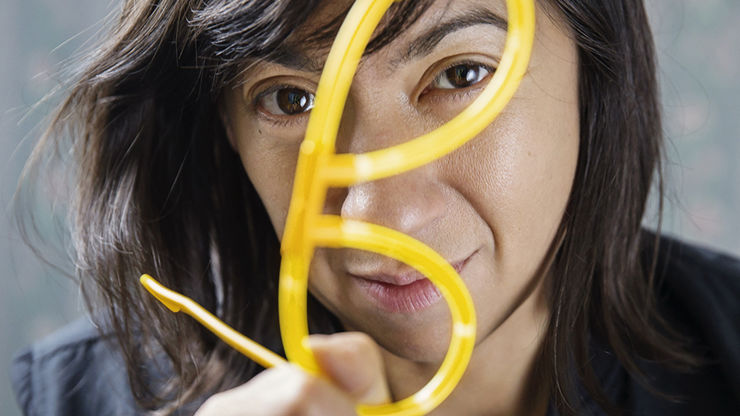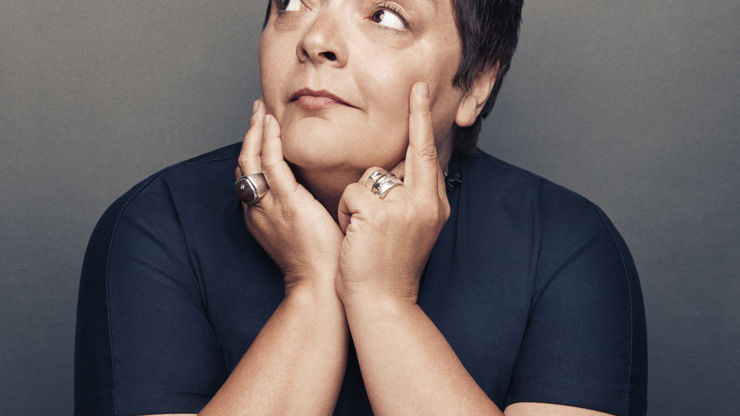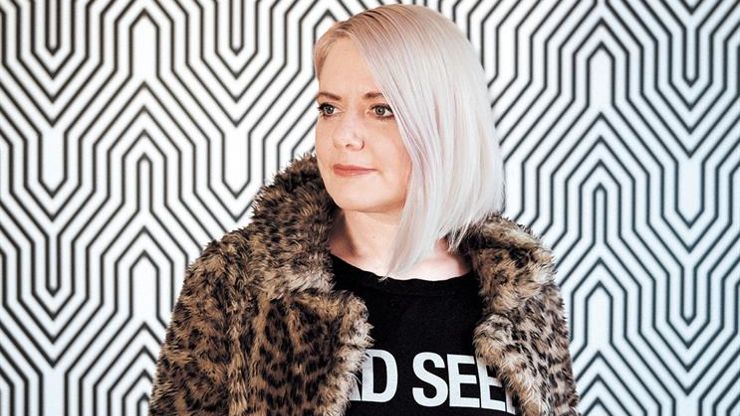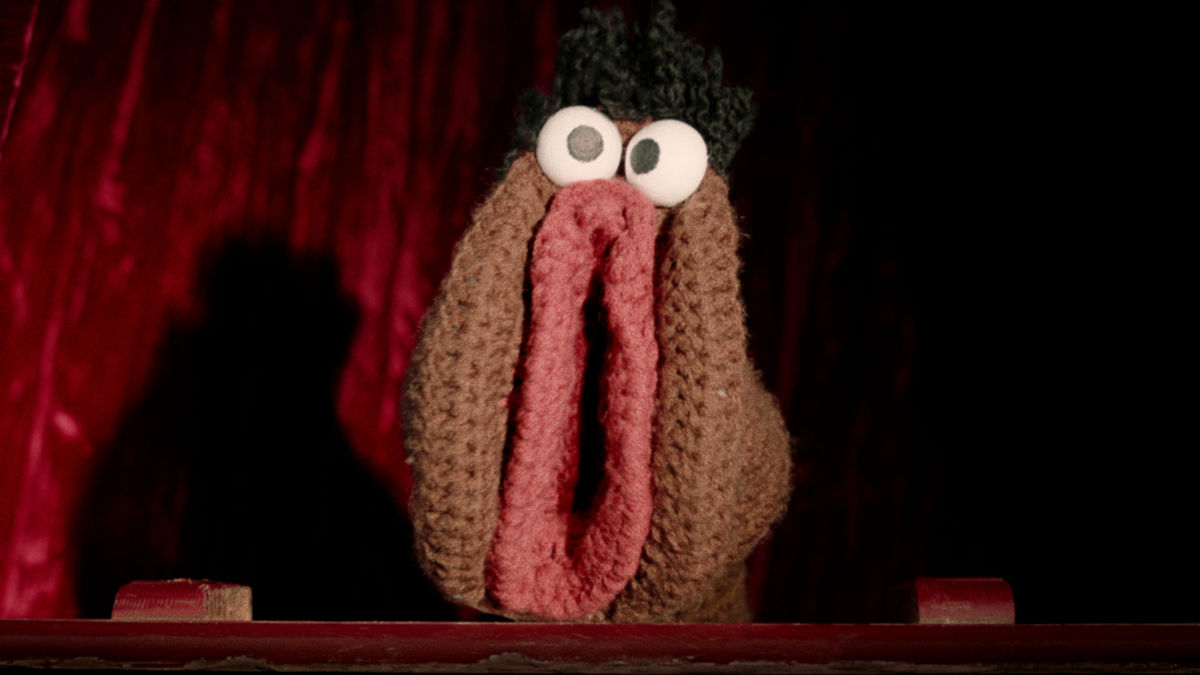Send in the (lady) clowns
Since This Girl Can jiggled its way onto our screens in 2015, there’s been some improvement in how women are portrayed in ads, but though we’re seeing more images of wobblier, tougher lasses, where are the funny ones? Carol Cooper investigates.
Bla bla butt lifts, bla bla bikini wax, bla bla stretchmarks, bla bla gender pay gap, bla bla Weinstein, weaning, whitening laundry tabs, worn out, #MeToo, you too?
Isn’t the business of being a woman just sometimes so DULL? Are there any words that strike a greater fear into the conflicted soul of a modern Western woman than M&S ‘Secret Slimming’ firm control shaping knickers? The huge market that exists in making women fret about flab or flyaway hair is supported by an ad industry that has long presented of women as image-obsessed mimsies or multi-tasking homemakers – neither of which are funny.
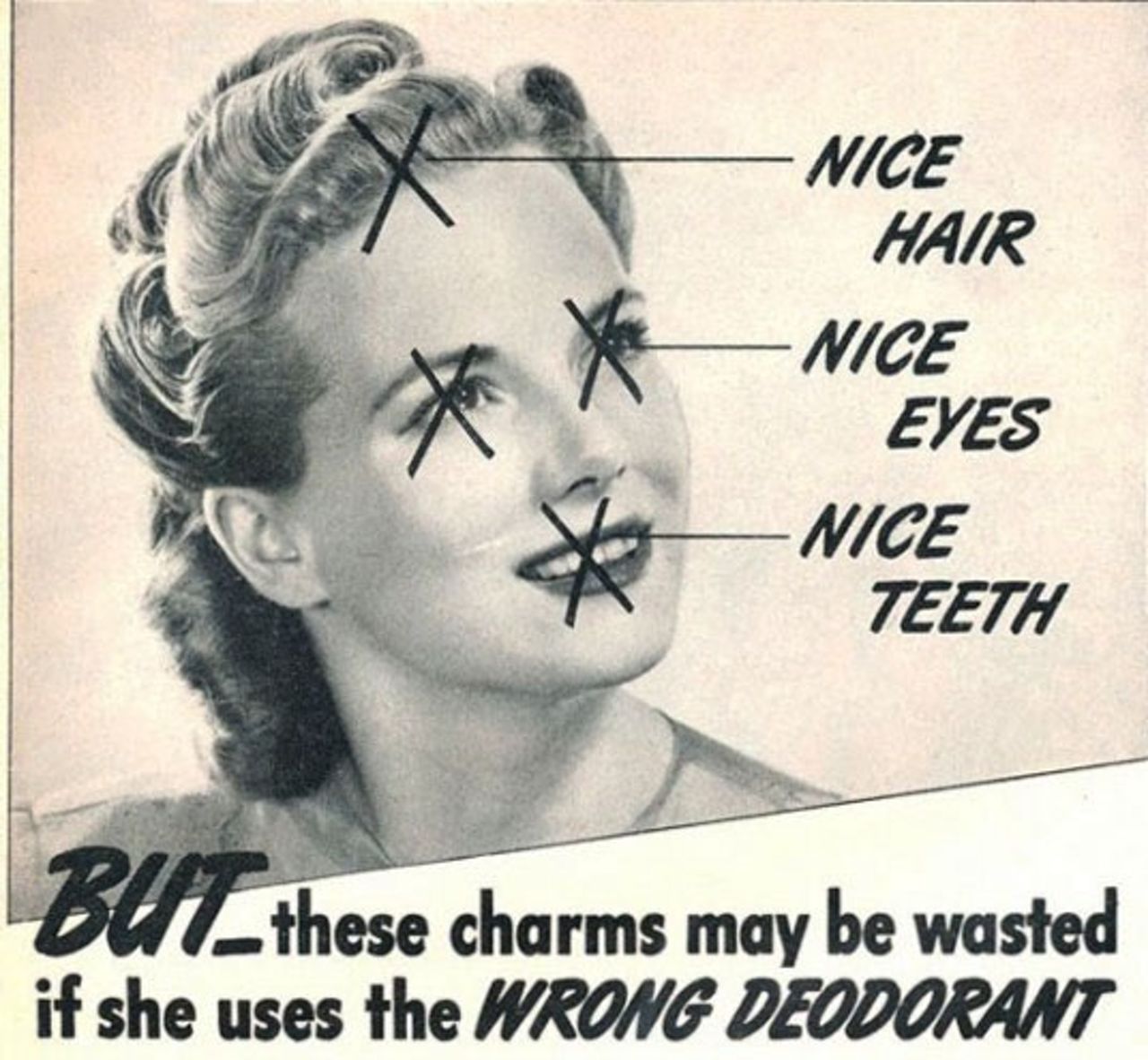
Refreshingly, the new RAF spot No Room for Cliches, directed by Sara Dunlop, launches a strike on such stereotypes with military-precision wit. Neatly juxtaposing footage of female RAF personnel being tough mudders with typical ad voiceovers of women whining about lip gloss and panty liners, it was a deserving winner of Channel 4’s Diversity in Advertising Award this year.
Credits
powered by
- Agency The Engine Group/London
- Production Company Rattling Stick
- Director Sara Dunlop
-
-
Unlock full credits and more with a Source + shots membership.
Credits
powered by
- Agency The Engine Group/London
- Production Company Rattling Stick
- Director Sara Dunlop

Credits
powered by
- Agency The Engine Group/London
- Production Company Rattling Stick
- Director Sara Dunlop
Created by Engine, the spot neatly delivers its message to adland – and women – with humour rather than hectoring, but wouldn’t it be great to see more ads with no mandate to message; where women are just perceived as simply funny?
The number of ads depicting an ‘endearing’ man-child engaged in some buffoonery, while his sensible spouse looks on with eye-rolling patience are too numerous to mention. Here’s R.White’s Secret Lemonade Drinker from 1973:
Credits
powered by
- Agency Allen Brady and Marsh
-
-
-
-
Unlock full credits and more with a Source + shots membership.
Credits
powered by
- Agency Allen Brady and Marsh
- CD Mike Brady / (Executive Producer)
- CD Peter Marsh
- CD Rod Allen
- Talent Ross Mcmanus

Credits
powered by
- Agency Allen Brady and Marsh
- CD Mike Brady / (Executive Producer)
- CD Peter Marsh
- CD Rod Allen
- Talent Ross Mcmanus
And the sad news is that nothing much has changed; a 2017 report from the Geena Davis Institute revealed that men are 2.6 times more likely than women to feature as the comical characters in commercials. So why are women so often portrayed as the ‘straight guys’?
Dunlop agrees the problem often starts with the brief. “We are often defined by labels like ‘working mum, wife, business woman, love interest. None of which are much fun. But TV has produced some brilliant female comedic leads. Why can't we have a character like Lena Dunham in Girls or Phoebe Waller-Bridge in Fleabag in an ad?”
What we have to remember is that advertising always borrows from culture and we are always slightly behind the curve.
Waller-Bridge is among a posse of female comedy writers/actors/directors who are storming ahead in TV and film [see our interview with the goddess that is Sharon Horgan here], making it all the more noticeable that advertising is lagging behind. Why is this?
“What we have to remember is that advertising always borrows from culture and we are always slightly behind the curve,” says Grey London CCO, Vicki Maguire, who points out that in film and TV, it’s celebrity status that gives more license for lady lols. “It might be tricky to cast an unknown, blonde, overweight girl in a tight-fitting dress as funny, but if it’s Rebel Wilson, she’s proven, she’s allowed to be. Same with Dawn French doing Terry’s Chocolate Orange; if we as a nation know it’s OK to laugh at, and with, a woman, that’s fine.”
More recently we’ve all enjoyed seeing Taylor Swift taking a comedy tumble in the hilarious Apple ad of 2016:
Credits
powered by
- Agency In-House
- Production Company Believe Media/USA
- Director Anthony Mandler
-
-
Unlock full credits and more with a Source + shots membership.
Credits
powered by
- Agency In-House
- Production Company Believe Media/USA
- Director Anthony Mandler
- Talent Taylor Swift
- Song "Jumpman" Drake & Future
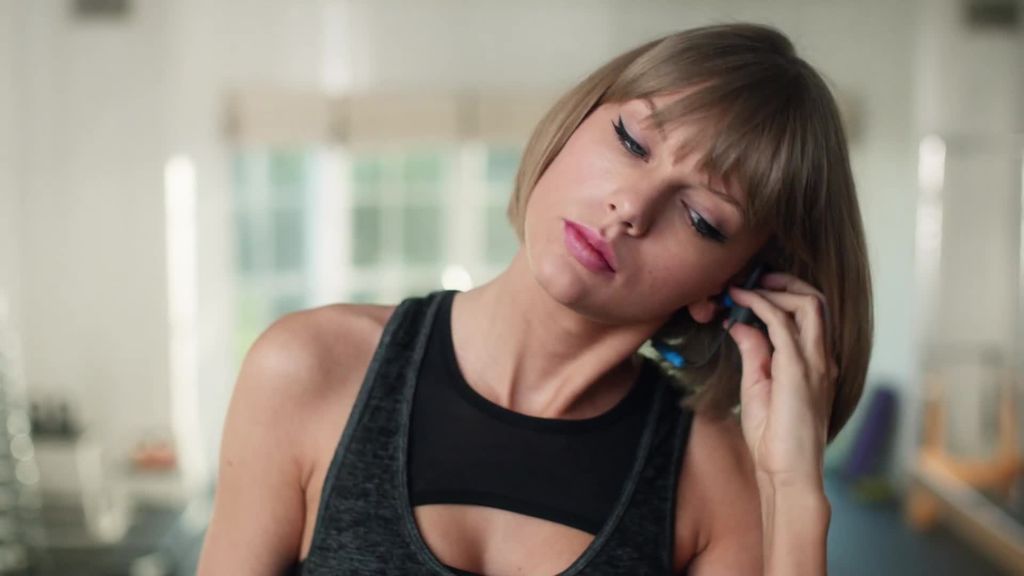
Credits
powered by
- Agency In-House
- Production Company Believe Media/USA
- Director Anthony Mandler
- Talent Taylor Swift
- Song "Jumpman" Drake & Future
Maguire does feel that changes are a-coming: “The industry is going through a transform or die stage; thanks to #MeToo and FreeTheBid, brands like P&G and Unilever looking at their output and Clearcast monitoring stereotypes. I think there’ll be a seismic shift in the way women are portrayed. Agencies are waking up to the fact that shows like Killing Eve are affecting the culture. Look at Uncommon’s trailer for ITV's Vera, which has Brenda Blethyn as a kick-ass role model, these are little wins. If we don't keep up with these shifts we as an industry will look old fashioned and left behind.”
Park Pictures director Alison Maclean also notes how the world of entertainment is streets ahead and suggests it could be about brands being over cautious. “In TV and movies, there seems to be more room for irreverence and satire – a willingness to risk provocation. With the rise of female comedians in film and TV, funny women are becoming more visible and powerful. I’d love to see more of that filter into advertising.”
Women’s humour is culturally a group activity where they laugh at stuff collectively. It can go against the grain to glorify one woman.
Lynne Parker, founder of Funny Women, a leading female comedy community, has long battled the “boys' club” she encountered when she started working in the comedy industry in the 90s and that she still finds in advertising, but also believes that some women have an uneasy relationship to humour.
“Women can be risk averse to comedy, they can sometimes block other women who appear funnier and more charismatic. Women’s humour is culturally a group activity where they laugh at stuff collectively. It can go against the grain to glorify one woman," she muses.
"I’ve discovered such polarised views about female comics – e.g. Miranda or Millican? I’m always amazed about how opinionated other women are about them.” She feels women don’t use jokes as much as men in daily life. “In certain situations they’ll get angry rather than use humour. A well-placed quip can disarm and diffuse a situation. But it’s often seen as being condescending from a woman but acceptable from a man.”
Above (left-right): Sara Dunlop; Vicki Maguire; Alison Maclean; Lynn Parker; Laura Jordan-Bambach; Fiona McGee
Could it be that women are more often perceived – or depicted – as battlers rather than jesters? Along with the tedium of worrying about our looks, (though male grooming ads are on the rise, they’re a damn site funnier than female beauty ads, see the hilarious Lynx ‘Shavetorials’) women have centuries of dealing with more grave issues. Being a hunger-striking suffragette force fed in Holloway jail; not funny. Battling oppression, FGM, or the pervy bants of a late-night Uber driver – no laughing matter. Childbirth; again – not amusing. Being a woman is about as funny as chlamydia.
“It might make sense that there’s a ‘walking-on-eggshells’ quality right now, in light of larger conversations in the culture around sexism and representation,” says Maclean. But Laura Jordan-Bambach, CCO of Mr President and co-founder of advocacy group SheSays, feels the problem isn’t that women are somehow seen as ‘serious’ it’s more that in some ways they’re not seen at all. “My experience, and the experience of a lot of women from SheSays, isn't that they are not seen as funny because they are battling, they are not seen as funny because they are completely overlooked.”
For too long, language and culture has favoured male gonads over females when it comes to mirth. So thank God for AMV BBDO and Kim Gehrig’s witty, wondrous festival of front bottoms.
Jordan-Bambach says women have reported saying funny lines that are ignored, while a male creative might say the same line that is viewed as funny. “Agencies’ creative departments still aren't equal. Women are still less likely to be put on pitches and less likely to be working on big award-winning briefs where often humour is the answer. There are fewer women writing comedic roles and therefore less of a female point of view,” she adds.
This is compounded by a lack of female commercials directors entrusted with comedy scripts. “Women directors traditionally have been trusted with the beauty, hygiene and baby markets,” says Goodoil Films director Fiona McGee, “[and] those markets tend to be less comedic than say beer, bank or car ads. Also women directors historically have not been awarded bigger budgets. So those tampon and nappy ads on the showreel don’t really translate to being awarded bigger jobs. So it’s a vicious cycle of pastels and baby smiles.”
Credits
powered by
- Agency VCCP/Sydney
- Production Company Goodoil Films
- Director Fiona McGee
-
-
Unlock full credits and more with a Source + shots membership.
Credits
powered by
- Agency VCCP/Sydney
- Production Company Goodoil Films
- Director Fiona McGee
- Executive Creative Director Gary Dawson
- Creative Director Paul Sharp
- Creative Gary Dawson
- Creative Paul Sharp
- Creative Ant Hines
- Creative Trent Christie
- Producer Claire Richards
- Editor Offline Tim Parrington
- Editor Online Drew Downes
- Sound Songzu
- Talent Isla Fisher
- Talent Isla Fisher
- Creative Chris McMullen
- Managing Partner David Kennedy Cosgrove
- Group Account Director Kim Ellis
- Executive Planning Director Michelle O'Neil
- Executive Planning Director Kim Feitelberg
- Producer Wendy Gillies

Credits
powered by
- Agency VCCP/Sydney
- Production Company Goodoil Films
- Director Fiona McGee
- Executive Creative Director Gary Dawson
- Creative Director Paul Sharp
- Creative Gary Dawson
- Creative Paul Sharp
- Creative Ant Hines
- Creative Trent Christie
- Producer Claire Richards
- Editor Offline Tim Parrington
- Editor Online Drew Downes
- Sound Songzu
- Talent Isla Fisher
- Talent Isla Fisher
- Creative Chris McMullen
- Managing Partner David Kennedy Cosgrove
- Group Account Director Kim Ellis
- Executive Planning Director Michelle O'Neil
- Executive Planning Director Kim Feitelberg
- Producer Wendy Gillies
McGee is one of the few whose showreel contains ads where females lead the comedy - see Isla Fisher larking around in the ING Direct ads.
She is optimistic that change is on the way. “The imbalance is being corrected slowly but surely. I feel this is an exciting time in advertising. Much of the conversation needs to change at a concept level too - fewer ads set in kitchens with Mum’s delivering happy-go-lucky eye rolls. Clients are expecting this change so it can only be a good thing. At the end of the day a good director is paid for their point of view. The more diversity in this point of view the better.
Possibly one of the most exciting indications that a change is coming is in the fact that Bodyform/Libresse’s Viva La Vulva has paved the way for advertising to erm… embrace… women’s bits. For too long, language and culture has favoured male gonads over females when it comes to mirth. ‘Knob’, ‘tool’, ‘dick’- these are all words that are frequently inserted into discourse, often in a light-hearted bants sort of way.
Credits
powered by
- Agency AMV BBDO/London
- Production Company Somesuch
- Director Kim Gehrig
-
-
Unlock full credits and more with a Source + shots membership.
Credits
powered by
- Agency AMV BBDO/London
- Production Company Somesuch
- Director Kim Gehrig
- DP Deepa Keshvala
- Production Designer Marie Lanna
- Editor Elise Butt

Credits
powered by
- Agency AMV BBDO/London
- Production Company Somesuch
- Director Kim Gehrig
- DP Deepa Keshvala
- Production Designer Marie Lanna
- Editor Elise Butt
It can be funny to call someone a bell-end, but you’ll rarely hear jovial types down the pub bandying around such phrases as “you total vulva”. The C word is serious, often used in aggression. Clitoris and vagina, rarely heard outside the worlds of porn or gynaecology. So thank God for AMV BBDO and Kim Gehrig’s witty, wondrous festival of front bottoms. What advertising needs now is more knitted fannies singing at us.
)
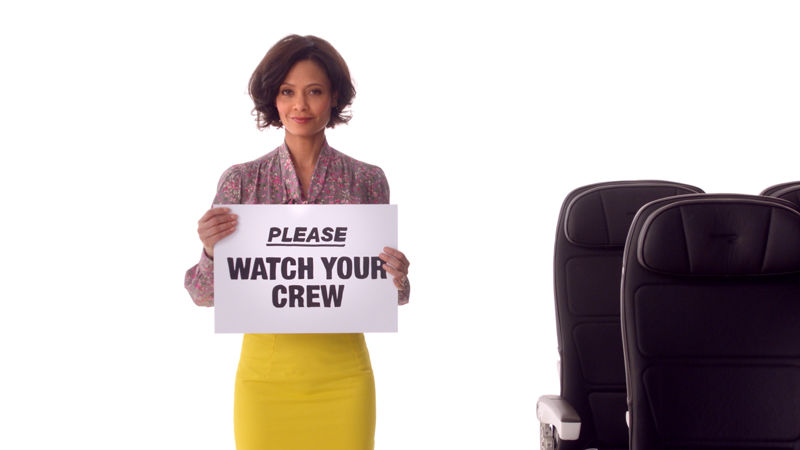
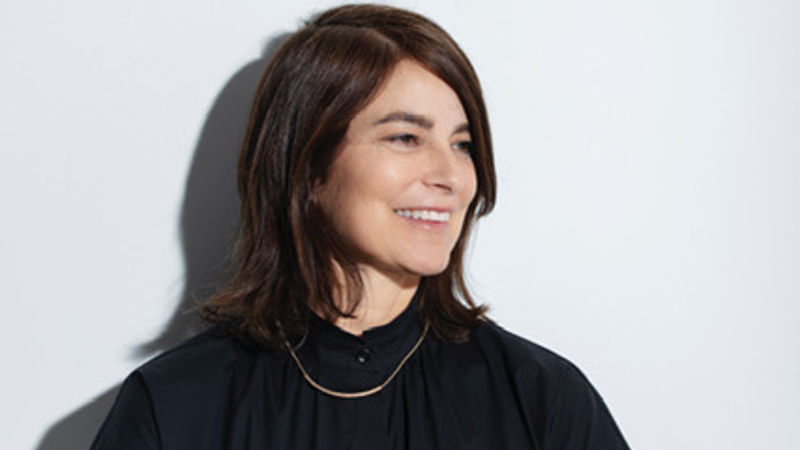


 + membership
+ membership







